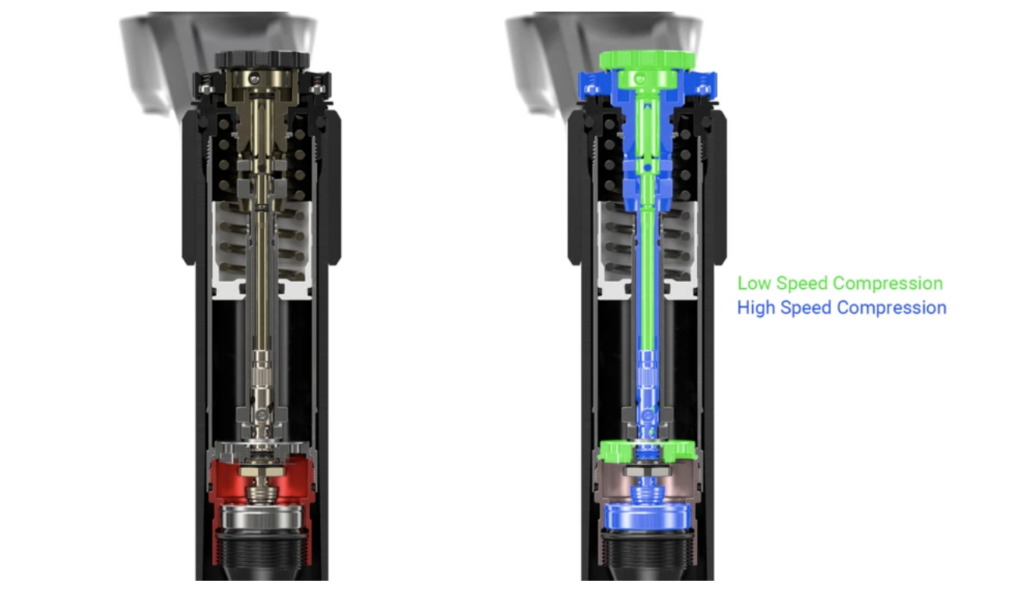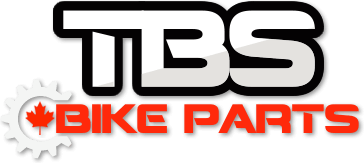Key Components of a Mountain Bike Fork: Mountain bike forks are a fundamental part of a bike’s suspension system, playing a crucial role in how a bike handles, absorbs shocks, and maintains traction on rugged and unpredictable trails. Whether you’re navigating steep descents, flowing through technical rock gardens, or climbing twisty trails, the fork’s design and components greatly influence your ride experience.
From the stanchions that glide smoothly to absorb bumps to the chassis that provides structural strength and stability, every part of the fork is engineered to deliver optimal performance. Understanding the anatomy of a mountain bike fork helps you appreciate how it works and make informed choices when tuning or upgrading your suspension setup. Let’s dive into the main components of a mountain bike fork and see how they work together to keep you in control, comfortable, and confident on the trail.
1. Stanchions (Upper Tubes)
- Description: The stanchions are the upper tubes of the fork, usually coated or treated to reduce friction and increase durability.
- Function: They slide in and out of the lower legs (lowers) to provide suspension movement. The stanchions need to be kept clean and well-lubricated to maintain smooth performance.
2. Lowers (Lower Legs)
- Description: The lower section of the fork, often made from sturdy materials like magnesium to withstand impacts and house the fork’s internals.
- Function: The lowers encase the stanchions and are responsible for holding the axle, connecting the fork to the front wheel. They also contain the bushings and wipers that keep the stanchions moving smoothly.
3. Crown
- Description: The part that connects the two stanchions at the top of the fork.
- Function: The crown holds the stanchions in place and connects to the steerer tube, providing structural integrity and helping transfer forces from the wheel to the frame.
4. Steerer Tube
- Description: The tube that extends from the crown and fits into the head tube of the bike frame.
- Function: The steerer tube allows the fork to be secured to the frame and connects to the handlebars via the stem, enabling steering control.
5. Air Spring or Coil Spring
- Air Spring: Uses compressed air for suspension. It is lighter and easier to adjust by adding or releasing air pressure.
- Coil Spring: Uses a metal coil for suspension. It offers consistent performance but is heavier and less adjustable.
- Function: The spring mechanism compresses and expands to absorb impacts, making the ride smoother and improving traction.
6. Damper
- Description: A mechanism that controls the fork’s rebound and compression speed.
- Function: The damper uses oil to control how quickly the fork returns to its original position after compression (rebound) and how it absorbs impacts (compression). Adjusting the damper settings can fine-tune the fork’s behavior for different terrains.

7. Rebound Adjustment
- Description: A knob or dial, usually located at the bottom of the fork leg.
- Function: Adjusts the speed at which the fork returns to its extended position after being compressed. Faster rebound can make the bike feel livelier, while slower rebound provides more control.
8. Compression Adjustment
- Low-Speed Compression (LSC): Controls how the fork behaves under gradual forces, like pedaling or cornering.
- High-Speed Compression (HSC): Manages how the fork handles sudden impacts, like drops or rocky trails.
- Function: Compression settings are used to fine-tune how the fork absorbs impacts, improving performance based on rider preference and terrain.
9. Axle
- Description: A component that attaches the front wheel to the fork. Modern forks often use thru-axles for greater stiffness and security.
- Function: The axle holds the wheel in place and helps maintain alignment, especially important for handling and stability on rough trails.
10. Bushings and Wipers
- Bushings: Internal guides located in the lowers, ensuring smooth movement of the stanchions.
- Wipers: Seals at the top of the lowers, keeping dirt and debris out while retaining lubrication.
- Function: Both components work together to ensure the fork’s internals stay clean and the movement remains smooth.
11. Lockout
- Description: A feature that limits or completely stops the fork’s travel, making it rigid.
- Function: Useful for climbing or riding on smooth surfaces, as it prevents suspension bob and makes pedaling more efficient.
12. Travel
- Description: The amount of movement the fork allows, measured in millimeters.
- Function: More travel (e.g., 160mm) is suited for aggressive downhill and enduro riding, while less travel (e.g., 100-130mm) is ideal for cross-country and trail riding.
Chassis (Overall Structure of the Fork)
- Description: The term “chassis” refers to the overall structure of the fork, which includes the stanchions (upper tubes), lowers (lower legs), and the crown. The chassis defines the fork’s stiffness, strength, and how it handles impacts and rough terrain.
- Function: The chassis holds all the fork components together and provides the structural integrity needed to absorb shocks and bumps while maintaining precise steering control. A well-designed chassis balances stiffness (for control and durability) with weight savings (for easier handling and better efficiency).
Final Thoughts
Understanding the key components of a mountain bike fork—such as the stanchions, chassis, spring system, damper, and axle—is essential for getting the best performance out of your ride. Each part plays a unique role, from absorbing shocks and maintaining stability to providing precise steering control and smooth suspension movement.
Choosing the right fork depends on your riding style, terrain, and personal preferences. For aggressive downhill or enduro riding, a fork with a robust, stiff chassis and high-end damping adjustments is ideal. Meanwhile, for cross-country and trail enthusiasts, a lighter fork with a more efficient setup may be preferable.
Regular maintenance, like cleaning the stanchions, checking the seals, and tuning the damping settings, will ensure your fork performs at its best and lasts longer. By understanding these components, you’ll be more equipped to fine-tune your bike, choose the right upgrades, and confidently tackle any trail.
SHOP ALL MOUNTAIN BIKE FORKS HERE
Remember that we offer free shipping on all orders over $149CAD. Orders are all processed and shipped within 24 business hours as well. Looking for mountain bike parts? We stock hundreds of parts from multiple brands and you can shop our entire selection here.
Spend less and ride the best with TBS Bike Parts.
Related Articles
THE IMPORTANCE OF MTB SUSPENSION AND HOW TO MAINTAIN IT
ROCKSHOX FLIGHT ATTENDANT TECHNOLOGY OVERVIEW
WE CAN SPECIAL ORDER SRAM/ROCKSHOX PRODUCTS
ROCKSHOX CHARGER 3 VS. CHARGER 3.1
EVERYTHING YOU NEED TO KNOW ABOUT ROCKSHOX DEBONAIR+


